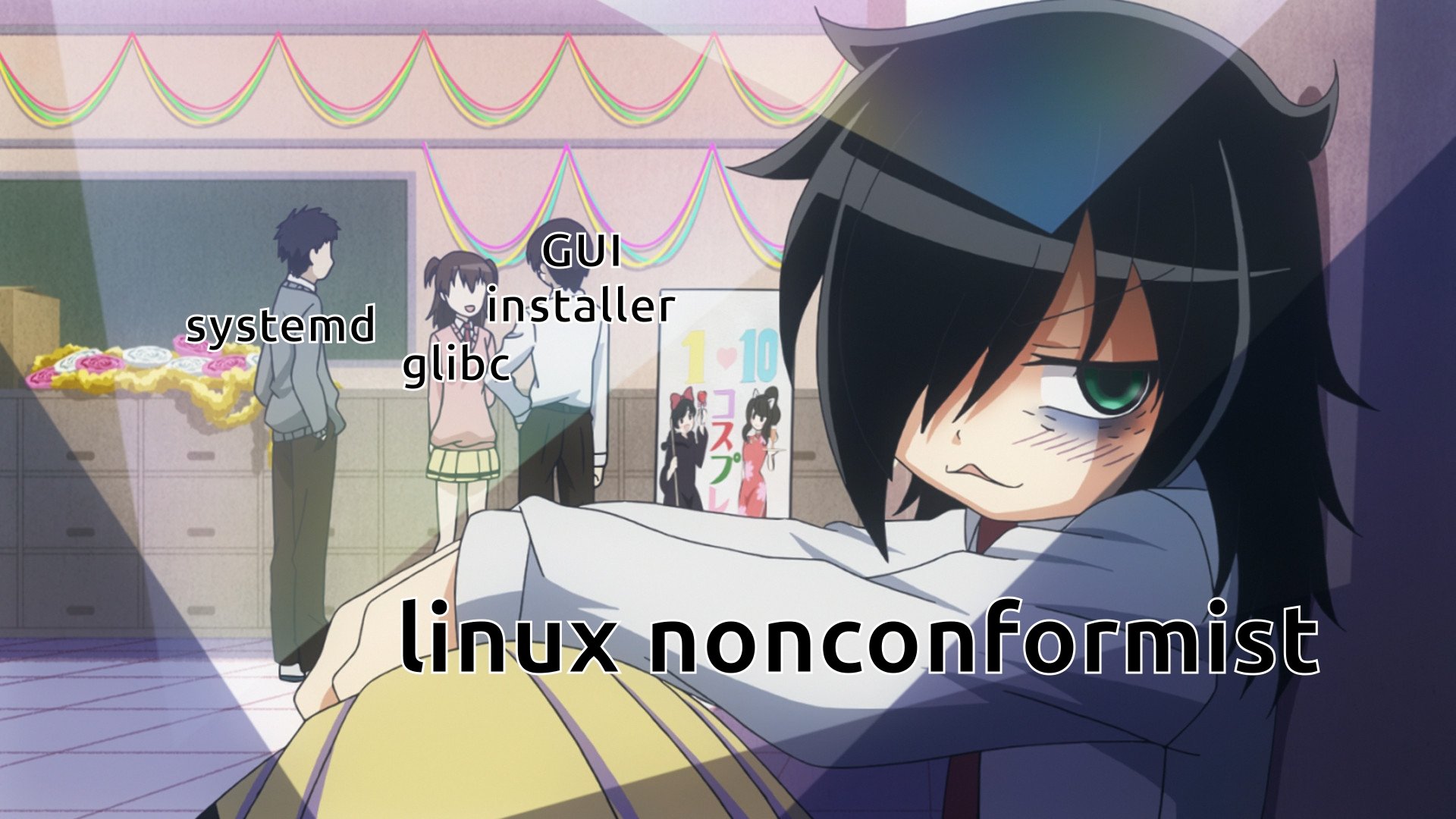320
you are viewing a single comment's thread
view the rest of the comments
view the rest of the comments
this post was submitted on 01 Apr 2024
320 points (93.2% liked)
linuxmemes
21281 readers
55 users here now
Hint: :q!
Sister communities:
Community rules (click to expand)
1. Follow the site-wide rules
- Instance-wide TOS: https://legal.lemmy.world/tos/
- Lemmy code of conduct: https://join-lemmy.org/docs/code_of_conduct.html
2. Be civil
- Understand the difference between a joke and an insult.
- Do not harrass or attack members of the community for any reason.
- Leave remarks of "peasantry" to the PCMR community. If you dislike an OS/service/application, attack the thing you dislike, not the individuals who use it. Some people may not have a choice.
- Bigotry will not be tolerated.
- These rules are somewhat loosened when the subject is a public figure. Still, do not attack their person or incite harrassment.
3. Post Linux-related content
- Including Unix and BSD.
- Non-Linux content is acceptable as long as it makes a reference to Linux. For example, the poorly made mockery of
sudoin Windows. - No porn. Even if you watch it on a Linux machine.
4. No recent reposts
- Everybody uses Arch btw, can't quit Vim, and wants to interject for a moment. You can stop now.
Please report posts and comments that break these rules!
Important: never execute code or follow advice that you don't understand or can't verify, especially here. The word of the day is credibility. This is a meme community -- even the most helpful comments might just be shitposts that can damage your system. Be aware, be smart, don't fork-bomb your computer.
founded 1 year ago
MODERATORS

So does sysvinit. PID 1 has to be root to do its job. Under sysvinit it is the responsibility of each daemon to drop privileges on their own if they wish to do so.
Systemd can handle your services such that they start unprivileged from the get go. It also offers a lot of isolation by default with options like PrivateTmp, ProtectHome, ProtectSystem powered by cgroups. It can effectively run your services like they're in a Docker container if you want.
A lot of systemd also runs as separate services with their own user as well. Only the core init part really runs as root, it prefers to drop privilges and apply cgroup isolation wherever it makes sense to do so. The logger for example runs as systemd-journald, the DNS resolver runs as systemd-resolved. They're part of the systemd package but far from all of it runs as root. Systemd can even do certain privileged operations so that the service can run with less privileges such as binding port 80/443 for you so the web server doesn't need root at all to run.
It also enables users to do certain operations without requiring elevating privileges with sudo, which in many cases can help not have to give sudo NOPASSWD specific commands because your web developers need to be able to restart the web server, you can just add a Polkit rule that allows restarting that service without privileges. Systemd is all D-Bus, so you can control access at a very granular level. You can grant only start and reload if you want.
Sysvinit is just shell scripts running as root. There is no security whatsoever, it was never sysvinit's job to secure the system. It's mostly fine as all the tooling for it also requires root to use. But it does require root 100% of the time to interact with it.
There's good reasons to prefer sysvinit, those are just common FUD systemd haters keep spreading. There's no need to discredit or outright lie about systemd to justify preferring sysvinit: the simplicity of a few shell scripts and not needing 99% of what systemd does is a perfectly valid argument on its own.
I have boxes that use systemd very heavily and some that have a custom bash script as the init because the box only needs an IP and to start a single app. Right tool for the right job and stuff.
Right, same problem with the desktop "OS Wars", I just don't see the point. Personally, on any given day, I'm switching between all 3 major OS's